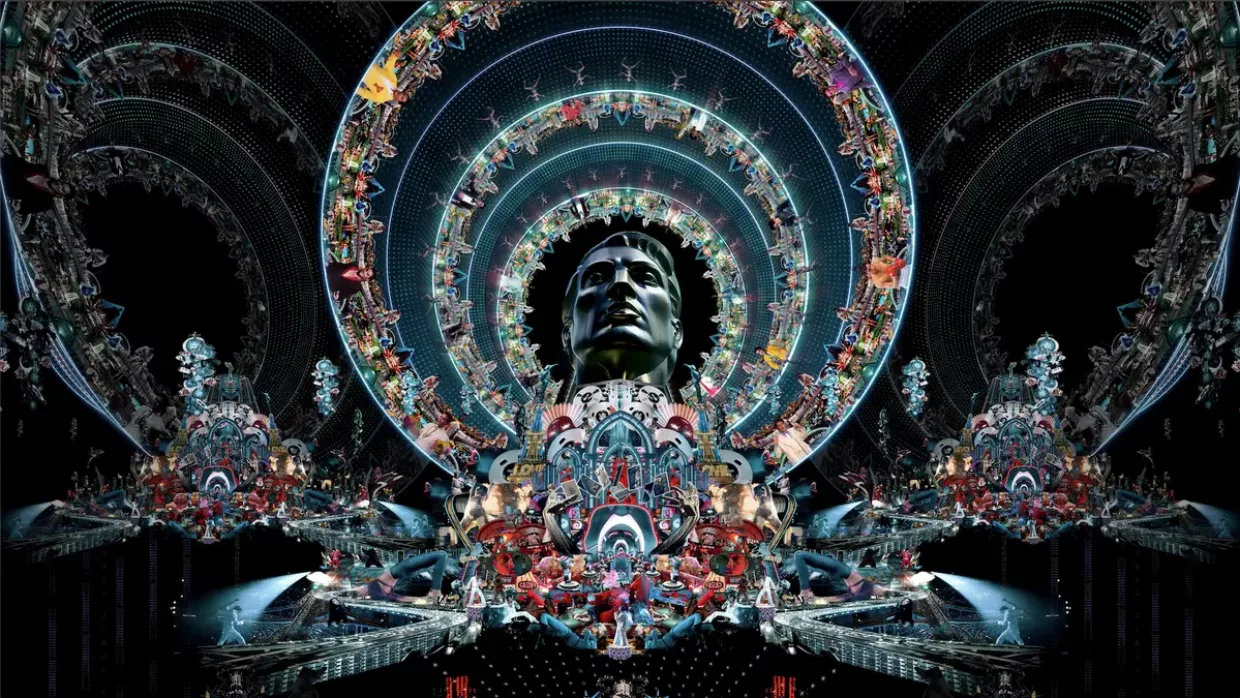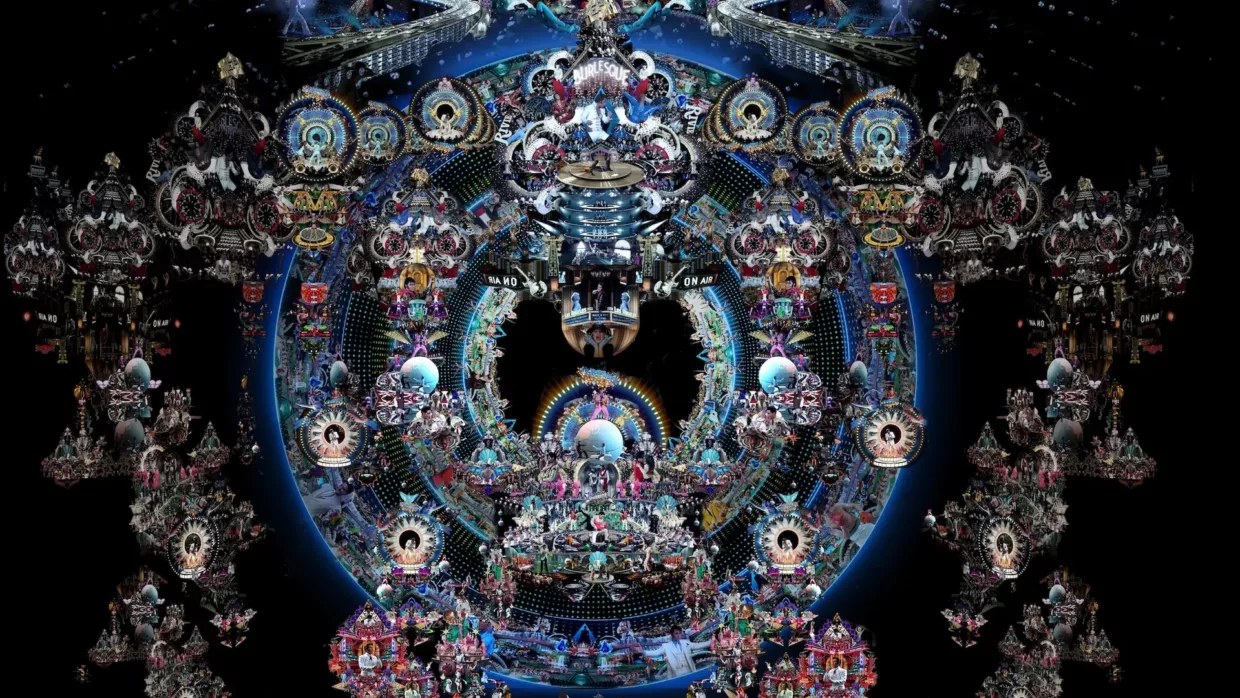Elvis returns to Las Vegas in Marco Brambilla’s new video for the Sphere, created with AI
Sep. 26, 2023
Never mind the long history of Elvis Presley sightings at supermarkets and airports. These days the King lives on in biopics and the popular imagination. And, starting 29 September, he is back in Las Vegas to help inaugurate the Sphere, the $2.3bn entertainment venue designed by Populous to look like a gigantic mirror ball fallen from the cosmic disco in the sky and to house an enormous, wraparound screen inside, like an Imax theater on steroids.
The latest Elvis extravaganza is the work of London-based artist Marco Brambilla: a four-minute, hyper-detailed, image-dense video starring the King in his different incarnations—from young army officer to swaggering movie star to bloated has-been—as well as the dream-city of Vegas itself, which somewhat similarly evolves from a small desert oasis into the neon epicenter of debacle-spectacle. In keeping with its themes of celebrity-image proliferation and saturation, King Size (2023) is Brambilla’s biggest video collage yet, using 1,000 looped video clips from different movies, including all 33 Elvis films.
“I’m using the language of excess,” says Brambilla. “I wanted it to be a spectacle in the tradition of Hollywood, Busby Berkeley and Irwin Allen. It’s really over the top.”
So is the technology. Made for a screen that spans 160,000 sq. ft and curves over 180 degrees, the video has an extremely high, 16K resolution. It was commissioned by the artistic director Willie Williams for the band U2 to play during their concerts at the Sphere (29 September-16 December), with other artists such as John Gerrard providing videos as well. King Size will play, appropriately enough, during the group’s 1991 hit “Even Better than the Real Thing”; Brambilla then plans to show the work at his Berlin gallery, Michael Fuchs Galerie, using an Elvis-inspired soundtrack.
The artist has worked with CGI (computer-generated imagery) for his earlier “digital-psychedelic” productions like Heaven’s Gate (2022). This time, he also used artificial intelligence (AI) to create likenesses of Elvis and the outlandish Vegas settings, with some memorable results. One image, created with the Midjourney AI image generator, shows Elvis rising from stacks of gold coins on a gaming table—his body made of gold. Another resulted from feeding the Stable Diffusion generator the prompt: “What would Elvis look like if he were sculpted by the artist who made the Statue of Liberty?”
Brambilla turned to AI instead of human researchers or video editors this time because, he says, he was on deadline to complete this project quickly, within four months. “What I found is that it was very good at sketching, making conceptual sketches and hybrid images. It often comes up with things that are very magical,” he says. “I was able to upload my library of 12,000 to 15,000 video clips into an AI engine and then train the AI to find images I wanted to use,” whether it was an image of a limo in front of a hotel or a neon sign in front of a sunset.
The bots were not so good, as you might expect, with rendering specific outfits or accessories, so Brambilla revamped some looks from Elvis (2022), the biopic by Baz Luhrmann, who shares something of the artist’s aesthetics of excess.
fter stitching together all of these images, Brambilla ran tests to make sure the video did not feel dizzying. He switched from a vortex-like format, which he found to be too intense, to a scrolling model where images float from bottom to top as the video plays. He also slowed down a number of the clips, so they would be easier to digest at this scale.
“It’s like looking through a window. If the work doesn’t cut too quickly or move too fast, it’s actually quite soothing,” he says, describing the way the Sphere feels “completely immersive” and the screen, consisting of thousands of LEDs, is more membrane than wall. “There’s no feel of architecture when you’re inside. This is the first time I’ve seen something that is impossible to replicate at home or in a conventional movie theatre.”
Source: The Art Newspaper


